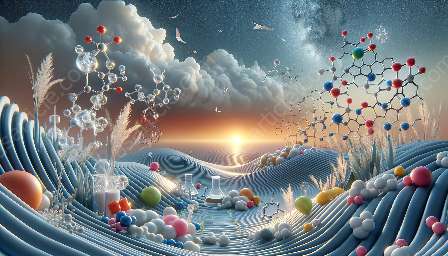In the field of polymer sciences, the study of polymer liquid crystals has become increasingly significant. Polymer liquid crystals exhibit unique thermodynamic behaviors that have important implications for materials science and various practical applications. This topic cluster will explore the thermodynamics of polymer liquid crystals, shedding light on their properties, behavior, and potential uses.
Understanding Polymer Liquid Crystals
Polymer liquid crystals are a class of materials that combine the properties of both polymers and liquid crystals. These materials are composed of long, chain-like polymer molecules that possess anisotropic ordering similar to that of liquid crystals. The thermodynamic behavior of these materials is critical in understanding their structure and performance.
Thermodynamic Properties of Polymer Liquid Crystals
The thermodynamics of polymer liquid crystals encompass a range of important properties. These include phase transitions, such as the transition between the isotropic and anisotropic phases, as well as the interactions between the polymer chains and the alignment of the liquid crystal domains. Understanding these thermodynamic properties is essential for predicting and controlling the behavior of polymer liquid crystals in various applications.
Phase Transitions
One of the key aspects of the thermodynamics of polymer liquid crystals is their phase transitions. These materials can transition between isotropic and anisotropic phases, driven by changes in temperature, pressure, or other external factors. The study of these phase transitions is essential for manipulating the properties of polymer liquid crystals and designing materials with specific characteristics.
Molecular Ordering and Alignment
Molecular ordering and alignment in polymer liquid crystals are also governed by thermodynamics. The interactions between the polymer chains and the formation of liquid crystal domains are influenced by the thermodynamic conditions. Understanding these processes can lead to the development of materials with tailored molecular arrangements and improved performance.
Significance in Polymer Sciences
The thermodynamics of polymer liquid crystals hold great significance in the field of polymer sciences. By understanding the behavior of these materials at a molecular level, researchers can develop new insights into the structure-property relationships of polymers. This knowledge can be applied to the design of advanced materials with specific functionalities and applications.
Applications of Polymer Liquid Crystals
Understanding the thermodynamics of polymer liquid crystals has led to the development of a wide range of applications. These materials are used in advanced displays, such as in liquid crystal displays (LCDs), as well as in optical devices, sensors, and functional polymers. The ability to control the thermodynamic behavior of polymer liquid crystals has opened up new avenues for materials design and engineering.
Conclusion
As the study of polymer liquid crystals continues to advance, the understanding of their thermodynamics becomes increasingly crucial. By delving into the thermodynamic properties of these materials, researchers can unlock new opportunities for materials design and innovation in polymer sciences. The unique behaviors and potential applications of polymer liquid crystals underscore the significance of studying their thermodynamics in the broader context of materials science and engineering.

